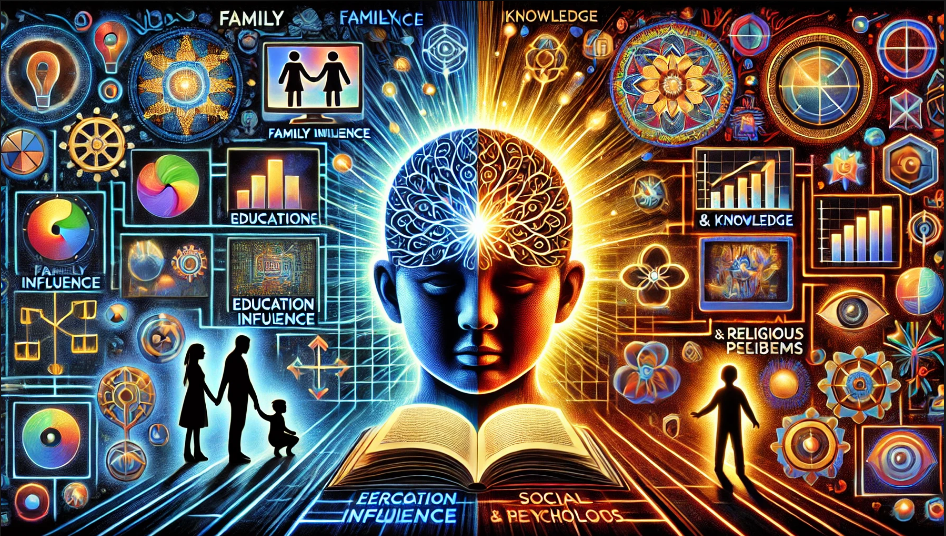Introduction
An individual’s attitude towards social problems is shaped by various internal and external factors. Attitudes determine how people perceive, react to, and engage with issues such as poverty, gender inequality, environmental concerns, and corruption. Understanding these factors helps in addressing negative attitudes and fostering progressive social perspectives. This essay explores the key influences on attitude formation toward social problems, with suitable examples to illustrate their impact.
Understanding Attitude Formation
Attitudes are learned predispositions to respond favorably or unfavorably to objects, people, or social issues. They are shaped by personal experiences, cultural contexts, education, social interactions, and psychological factors. Social problems such as discrimination, crime, unemployment, and climate change evoke different attitudes based on an individual’s background and exposure to information.
Factors Influencing Attitude Formation Towards Social Problems
1. Family and Upbringing
The family plays a crucial role in shaping an individual’s values, beliefs, and attitudes toward social issues. Parents and guardians influence a child’s early perceptions of right and wrong.
Example: A child raised in a family that values gender equality is more likely to develop a positive attitude toward women’s empowerment and social justice. On the other hand, if parents hold prejudiced views, their children may inherit similar biases.
2. Education and Knowledge
Education broadens perspectives and fosters critical thinking. Schools and universities expose individuals to diverse viewpoints, challenging stereotypes and misconceptions about social problems.
Example: A student studying environmental science is more likely to recognize the urgency of climate change and adopt eco-friendly practices, whereas someone without exposure to such information may remain indifferent.
3. Media and Information Exposure
Mass media, including television, newspapers, and social media, significantly shape public opinion on social issues. The framing of news, the portrayal of marginalized groups, and the dissemination of misinformation can reinforce or challenge societal biases.
Example: A person who regularly watches news reports on the refugee crisis may develop empathy for displaced individuals, while another exposed to fear-mongering narratives might form xenophobic attitudes.
4. Peer Influence and Social Circles
Friends, colleagues, and peer groups affect attitude formation by reinforcing shared beliefs or challenging existing ones. Peer pressure can lead to either progressive or regressive attitudes.
Example: A teenager in a socially conscious peer group advocating for LGBTQ+ rights may develop supportive attitudes toward the community, even if their family holds conservative views.
5. Cultural and Religious Beliefs
Cultural traditions and religious doctrines shape moral perspectives on social issues. While some cultural and religious teachings promote inclusivity and compassion, others may uphold restrictive or discriminatory views.
Example: In some societies, traditional beliefs support caste-based discrimination, while progressive religious leaders advocate for equality and social justice.
6. Personal Experiences
Direct or indirect experiences significantly shape attitudes. Individuals who have personally faced discrimination, economic hardships, or injustice may develop strong perspectives on related social issues.
Example: A person who has suffered workplace discrimination is more likely to advocate for labor rights and fair employment policies.
7. Economic and Social Status
An individual’s socio-economic background influences how they perceive social problems. Those from privileged backgrounds may lack awareness of poverty and systemic discrimination, while those from disadvantaged groups are more likely to recognize structural inequalities.
Example: A wealthy individual might view homelessness as a result of personal failure, whereas someone from a lower-income background may understand the structural issues contributing to it.
8. Government Policies and Political Environment
Government policies and political ideologies shape public attitudes. Laws that promote inclusivity and equality influence people’s acceptance of social reforms.
Example: Legalizing same-sex marriage in many countries has positively shifted public attitudes toward LGBTQ+ rights over time.
9. Psychological Factors and Cognitive Biases
Psychological tendencies, such as confirmation bias and cognitive dissonance, affect how individuals process social issues. People tend to accept information that aligns with their existing beliefs and reject contradictory perspectives.
Example: A person who believes in meritocracy may dismiss arguments about systemic racism, attributing social disparities solely to individual effort rather than structural barriers.
10. Globalization and Technological Advancements
Global exposure through travel, digital media, and cross-cultural interactions fosters more open-minded attitudes. Technology also enables activism and social awareness.
Example: Social media movements like #MeToo have changed attitudes toward gender-based violence by amplifying survivors’ voices and educating the public.
Conclusion
An individual’s attitude towards social problems is shaped by multiple factors, including family upbringing, education, media exposure, peer influence, cultural beliefs, personal experiences, socio-economic status, government policies, psychological biases, and globalization. Recognizing these influences is essential for promoting social awareness, encouraging empathy, and fostering positive change in society. By addressing the root causes of negative attitudes and enhancing access to diverse perspectives, we can build a more just and inclusive world.




